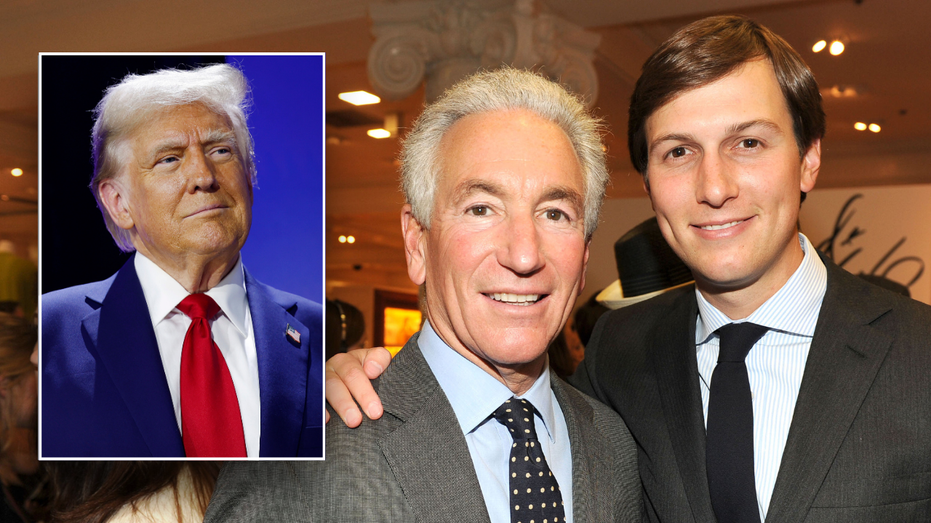Vance Used the V.P. Debate to Lie About Abortion
During the vice presidential debate Tuesday night, former President Trump tried to bail his running mate out of an abortion question with a series of half-truths and lies. “EVERYONE KNOWS I WOULD NOT SUPPORT A FEDERAL ABORTION BAN, UNDER ANY CIRCUMSTANCES, AND WOULD, IN FACT, VETO IT,” Trump posted to social media, “BECAUSE IT IS UP TO THE STATES TO DECIDE BASED ON THE WILL OF THEIR VOTERS (THE WILL OF THE PEOPLE!).”This is a nonsensical sentence for many reasons. Among them: No one is saying that Congress would pass a new federal ban and hand it Trump to sign or veto. What Trump might do—what his allies want him to do—is enact a ban by enforcing the 1873 Comstock Act, which can’t be vetoed since it’s already on the books. Trump’s misdirection distracts from his consistent anti-abortion record while in office, what the Republican Party platform states, and the very public plans of his former staffers detailed in Project 2025, which Trump also pretends he has nothing to do with. That is part of the Trump-Vance campaign’s plan on abortion: to do whatever they can not to talk about that plan, or at least to confuse the public about what that plan is.The questions moderators posed to vice presidential candidates Governor Tim Walz and Senator JD Vance on Tuesday night did little to clear matters up. They were not about abortion or abortion rights; they were questions about whether the candidates were lying about abortion.The question one moderator asked Walz reinforced anti-abortion misinformation spread by Trump. “After Roe v. Wade was overturned, you signed a bill into law that made Minnesota one of the least restrictive states in the nation when it comes to abortion. Former President Trump said in the last debate that you believe abortion ‘in the ninth month is absolutely fine.’ Yes or no? Is that what you support?” asked Norah O’Donnell of CBS News. “I’ll give you two minutes.” O’Donnell’s own news organization debunked this same “ninth month abortion” point after the last debate. “Former President Donald Trump falsely claimed during Tuesday night’s presidential debate that Vice President Kamala Harris’ running mate, Minnesota Gov. Tim Walz, supports the ‘execution’ of babies after they are born, repeating earlier false assertions that Democrats support killing babies,” CBS News fact-checker Laura Doan wrote way back on September 11. Walz answered the question posed to him about Minnesota’s abortion law very, very briefly—“That’s not what the bill says”—before pointing out the simple truth that, via his appointments of Neil Gorsuch, Brett Kavanaugh, and Amy Coney Barrett, Donald Trump helped end the federal right to an abortion in this country. “He brags about how great it was that he put the judges in and overturned Roe v. Wade, 52 years of personal autonomy.”Trump typically responds to this kind of argument by talking about “the will of the people,” as he did in his all-caps post. But when voters have been asked directly about abortion through ballot measures, they affirm the right to abortion. Trump is going to have his say as one of these voters: As a Florida resident, he will be able to vote on the Florida ballot measure that would repeal Florida’s post-Dobbs six-week abortion ban. He has said he would vote “no.” The Republican Party’s platform advances the idea that a fetus is a legal person with rights under the Fourteenth Amendment—which, should the courts agree, would effectively make abortion a crime in every state. Failing that, Trump’s former head of Health and Human Services, Roger Severino, argues that a national abortion ban already exists, in his section of Project 2025’s “Mandate for Leadership.” This argument that the Comstock Act of 1873 could be enforced today to ban abortion is legally dubious at best, but it enjoys the support of 145 Republican members of Congress and has already been entertained at the Supreme Court by Justices Thomas and Alito.The first abortion question moderators posed JD Vance was about whether he and Trump would create a federal pregnancy monitoring agency. “No, Norah, certainly we won’t,” he said, before launching into a lengthy digression about how the Republican Party needs to win back Americans’ trust on “this issue.” But having affirmed the importance of trust, in subsequent questions, he went on to lie spectacularly on two fronts: First, by saying “I never supported a national ban” (in 2022 he said he “would like abortion to be illegal nationally” and backed Lindsey Graham’s proposal for a federal abortion ban after 15 weeks), and later, by making an utterly bizarre claim about Minnesota abortion law. “The Minnesota law that you signed into law, the statute that you signed into law,” Vance said to Walz, “it says that a doctor who presides over an abortion where the baby survives, the doctor is under no obligation to provide lifesaving care to a baby who survives a botched late-term abortion.”“The idea of abortion being performed after birth is sometimes used

During the vice presidential debate Tuesday night, former President Trump tried to bail his running mate out of an abortion question with a series of half-truths and lies. “EVERYONE KNOWS I WOULD NOT SUPPORT A FEDERAL ABORTION BAN, UNDER ANY CIRCUMSTANCES, AND WOULD, IN FACT, VETO IT,” Trump posted to social media, “BECAUSE IT IS UP TO THE STATES TO DECIDE BASED ON THE WILL OF THEIR VOTERS (THE WILL OF THE PEOPLE!).”
This is a nonsensical sentence for many reasons. Among them: No one is saying that Congress would pass a new federal ban and hand it Trump to sign or veto. What Trump might do—what his allies want him to do—is enact a ban by enforcing the 1873 Comstock Act, which can’t be vetoed since it’s already on the books. Trump’s misdirection distracts from his consistent anti-abortion record while in office, what the Republican Party platform states, and the very public plans of his former staffers detailed in Project 2025, which Trump also pretends he has nothing to do with. That is part of the Trump-Vance campaign’s plan on abortion: to do whatever they can not to talk about that plan, or at least to confuse the public about what that plan is.
The questions moderators posed to vice presidential candidates Governor Tim Walz and Senator JD Vance on Tuesday night did little to clear matters up. They were not about abortion or abortion rights; they were questions about whether the candidates were lying about abortion.
The question one moderator asked Walz reinforced anti-abortion misinformation spread by Trump. “After Roe v. Wade was overturned, you signed a bill into law that made Minnesota one of the least restrictive states in the nation when it comes to abortion. Former President Trump said in the last debate that you believe abortion ‘in the ninth month is absolutely fine.’ Yes or no? Is that what you support?” asked Norah O’Donnell of CBS News. “I’ll give you two minutes.”
O’Donnell’s own news organization debunked this same “ninth month abortion” point after the last debate. “Former President Donald Trump falsely claimed during Tuesday night’s presidential debate that Vice President Kamala Harris’ running mate, Minnesota Gov. Tim Walz, supports the ‘execution’ of babies after they are born, repeating earlier false assertions that Democrats support killing babies,” CBS News fact-checker Laura Doan wrote way back on September 11.
Walz answered the question posed to him about Minnesota’s abortion law very, very briefly—“That’s not what the bill says”—before pointing out the simple truth that, via his appointments of Neil Gorsuch, Brett Kavanaugh, and Amy Coney Barrett, Donald Trump helped end the federal right to an abortion in this country. “He brags about how great it was that he put the judges in and overturned Roe v. Wade, 52 years of personal autonomy.”
Trump typically responds to this kind of argument by talking about “the will of the people,” as he did in his all-caps post. But when voters have been asked directly about abortion through ballot measures, they affirm the right to abortion. Trump is going to have his say as one of these voters: As a Florida resident, he will be able to vote on the Florida ballot measure that would repeal Florida’s post-Dobbs six-week abortion ban. He has said he would vote “no.” The Republican Party’s platform advances the idea that a fetus is a legal person with rights under the Fourteenth Amendment—which, should the courts agree, would effectively make abortion a crime in every state. Failing that, Trump’s former head of Health and Human Services, Roger Severino, argues that a national abortion ban already exists, in his section of Project 2025’s “Mandate for Leadership.” This argument that the Comstock Act of 1873 could be enforced today to ban abortion is legally dubious at best, but it enjoys the support of 145 Republican members of Congress and has already been entertained at the Supreme Court by Justices Thomas and Alito.
The first abortion question moderators posed JD Vance was about whether he and Trump would create a federal pregnancy monitoring agency. “No, Norah, certainly we won’t,” he said, before launching into a lengthy digression about how the Republican Party needs to win back Americans’ trust on “this issue.” But having affirmed the importance of trust, in subsequent questions, he went on to lie spectacularly on two fronts: First, by saying “I never supported a national ban” (in 2022 he said he “would like abortion to be illegal nationally” and backed Lindsey Graham’s proposal for a federal abortion ban after 15 weeks), and later, by making an utterly bizarre claim about Minnesota abortion law. “The Minnesota law that you signed into law, the statute that you signed into law,” Vance said to Walz, “it says that a doctor who presides over an abortion where the baby survives, the doctor is under no obligation to provide lifesaving care to a baby who survives a botched late-term abortion.”
“The idea of abortion being performed after birth is sometimes used to stigmatize abortion care received later in pregnancy,” as the American College of Obstetricians and Gynecologists write in a fact sheet responding to such misinformation. Talking points like Trump’s also distort perinatal palliative care, ACOG points out, which is given to reduce the discomfort of sick or disabled newborns whose conditions cause them to die shortly after birth. “At no point in the course of delivering a newborn with life-limiting conditions and subsequently providing palliative care does the obstetrician–gynecologist end the life of the newborn receiving palliative care.”
Walz tried to push back again, to say this isn’t what the law said. Vance adopted a know-it-all debate club stance: “What was I wrong about? Governor, please tell me. What was I wrong about?”
In this way, the debate became more about competing claims of what the other person said than about clarifying the candidates’ actual positions. If this sounds tedious to you and impossible to follow, well, you’re not alone. The meta-debate about abortion is boring and exhausting. But you can see why Trump and Vance would prefer to stay there, in the meta-debate. So long as the campaign sows confusion and rewrites reality around a policy position that is wildly unpopular—restricting abortion access—it helps Trump.
Democrats should take every opportunity to argue for what they want and reassert reality, as Walz tried to do. But there’s still a lot further to go: According to a May 2024 Times/Siena poll, around 17 percent of registered voters in swing states said that Biden is more responsible “for the Supreme Court ending the constitutional right to abortion” than Trump. Twelve percent of Democrats in those states said the same thing. What more proof do Democrats need that they have more and better storytelling to do?



